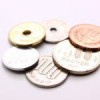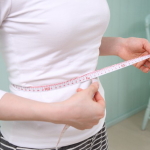peroxide dip for aquarium plants
Web6 Easy Steps to Bleach Dip Aquarium Plants Step 1: Manual Removal/General Prep. Another popular method for removing snails from plants is using a salt dip. The nitrate and phosphate levels can increase the algae in the tank. All I've ever done is rinse plant under lukewarm water. If you have any questions, please let us know in the section below. Check out other posts. Although I have already recommended that you sterilize new plants to avoid the risks of introducing new diseases or pests into your aquarium, you should also give the plants a good rinse under running water to remove any dirt or debris which may have become attached during transit. For doing the plants though, I will dip and swish for maybe 2 mins, then rinse and soak like no tomorrow, lol. We used a regular bleach at a ration of 19 cups water to 1 cup bleach. SUCCESS IS MEASURED BY YEARS, NOT MONTHS!!! PP (potasium permanganate) dip is another option to consider if you want. 8 Most Compatible Species, How To Clean Snails Off Of Live Aquarium Plants, sterilize your fish tank and fishkeeping equipment, get rid of half of the snail population in your fish tank, lights should be kept on a diurnal schedule, How To Keep A Fish Tank Warm Without A Heater, How Long Can Guppies Go Without Food? In addition, dont forget to wear protective gear and avoid direct contact with skin, eyes, and clothing. Done. Hydrogen peroxide is my dip of choice for algae. Using gloves, remove the plant from the solution and gently and thoroughly rinse your dipped plant in a neutralizing rinse solution prepared with a concentrated dechlorinator at 3x the recommended aquarium strength. I have tried a couple of times to have a Dutch Aquarium but didnt know how to clean the plants. Moreover, hydrogen peroxide is a peroxide and oxidizing agent. Once established, most live aquarium plants are easy to clean and care for, as long as you meet their most basic needs for light, fertilizer, and decent water quality. They're all oxidizers so there's no real benefit of one over the other except cost and availability. If your aquatic plant leaves are small and delicate, or the debris is more stubborn, you must remove them carefully without damaging the roots. Columnaris Betta Disease: Symptoms, Causes, and Treatment, Defeating Betta Velvet Disease: The Ultimate Guide to Symptoms, Treatments and Prevention, Betta Fish Fungus: A Complete Guide to Diagnosis and Treatment, Betta Furunculosis: A Guide to Diagnosis and Treatment, Betta Cloudy Eye Disease: Causes, Symptoms, and Treatment, First, add the calculated amount of hydrogen peroxide (H, Then, repeat the first step for 3 to 4 days, It is better if you can remove corals, fish, and other invertebrates from the tank, Please wear hand gloves and goggles before using the chemicals, First, add the above dosage into the tank once per day, Then, you can see the algae changing their color into pale and dying off, Once all algae have gone, change 50% of tank water, First, cover your hands with gloveless and eyes with goggles, Secondly, dip your aquarium plant in that solution for 3-4 minutes, But do not dip live plants for more than 5 minutes in a hydrogen peroxide solution, Then remove the aquatic plant from the solution, Finally, wash that aquatic plant in a running freshwater, First, insert this solution into the syringe, Then, slowly release hydrogen peroxide solution over the area that has overgrowth algae. How Long To Dip Plants In Hydrogen Peroxide To Kill BBA? there is one benefit. Perhaps there's much ado about nothing. Dip your plant in the hydrogen peroxide plant dip solution for no longer than 5 minutes. I have heard mixed ideas about dipping plants in h2o2 but I want to know what works without killing my plants. Using gloves, remove the The ideal ratio is approximately 1 cup of salt per 1 gallon of distilled water when mixing your salt dip. There is some major reason why you select hydrogen peroxide to clean algae besides other chemicals. Some aquarists simply consider planted aquariums too much of a hassle, while other fishkeepers see a tank without plants as a sterile, lifeless habitat. My mission is to help other aquarists experience the joy of fish keeping. Scape like a pro with UNS Tools (restocked!) Hardy plants can tolerate up to 5 minutes in a bleach solution, but delicate plants should only be submerged for 1-2 minutes max. *I'm not a newb at this hobby. Start adding plant fertilizers as soon as you introduce plants into your fish tank. The information is not intended to constitute professional or medical advice. Here, you can find out Expert Advice to Keeping Fish and Aquarium Maintenance. Add in a couple power headsand keep your filter running without the filter media in it while adding the peroxide. Your tanks filtration system will take care of the rest. So, are live aquarium plants worth the effort? You may want to move the container theyre in into a dark area, since light causes hydrogen peroxide to break down faster. We may earn small commissions from any purchases made through these 'affiliate links', at no extra cost to yourself. Although white vinegar is a popular choice, any vinegar with an acetic acid concentration of 5-10% will do. For a better experience, please enable JavaScript in your browser before proceeding. A sudden increase in algae can be caused by many factors and usually starts with an algae bloom closely followed by a bacterial bloom. Dip your plant in the hydrogen peroxide plant dip solution for no longer than 5 minutes. This will remove any visible dirt and debris. It is effective against algae, parasites, fungus, and bacteria. 'Links on this page that lead to products on Amazon, Chewy, or other retailers are affiliate links and I earn a commission (at no extra cost to you) if you make a purchase. Fish that lay eggs will often use plants as spawning sites, which provide both stability (eggs stick to the leaves easily) and protection. You can even put it in a spray bottle and while your water is down spray the sides of the tank but not sure it would get rid of the hydra. Then plant it in your aquarium tank. The best method for cleaning algae from your plants will be to remove it by hand or use an algae pad to rub it away gently. Very pleased to read this article. Once your plants have been given a good rinse, you can then dip them in a sterilizing solution as described above for good measure. However, this same reactivity can damage plant cells, causing leaves to brown and wilt. It does a good job with algae and parasites. When you purchase through links on our site, we may earn an affiliate commission, which supports our community. It's very common among aquarium owners for fish tank water to turn green. Here, you should use a low dosage. After sterilizing, it is important to give the plants a final rinse in clean water before planting them in your aquarium. Is Rust Bad For Aquarium Fish? Greenish water can be caused by a number of factors that result in an 13 Aquarium Plants That Grow On Rocks And Driftwood. After soaking, remove the plants from the bleach solution and rub the leaves gently to dislodge the algae. How Much Hydrogen Peroxide Is Safe For Fish Tank? Fish Lore is an amazon affiliate and some pages may contain links to aquarium related products on amazon: Affiliate Disclosure. Hydrogen peroxide is an ideal chemical that can use to overcome this issue. Mix two to three ml of 3% hydrogen peroxide to one gallon of water. The recommended ratio for a bleach plant dip is 1:19 or 1 part bleach to 19 parts water. Thus, to maintain a crystal clear aquarium, you can use hydrogen peroxide as a cleaning agent. It is only important to pay attention to the fact that you have proper hydrogen peroxide aquarium dosage. Unlike other chemical compounds used for disinfection and cleaning, H202 will be converted to harmless water and oxygen after 24 hours in contact with water, making it the perfect solution for use in such a delicate environment as an aquarium. Thus, for example, for blue-green algae infestation, it is recommended to use 8-15 ml of the 3% solution of hydrogen peroxide per 50 liters of water. Dolfan Oct 12, 2013 #5 Dip the plants' leaves, but not the roots 3.) Many hobbyists, especially beginners, are often confused by arithmetic, so we will explain it to you briefly. Hydrogen peroxide is a perfect cleaning agent to sterilize fish tanks, ornaments, and live plants. Place the plants into the quarantine tank. You can also use diluted solutions of any of these disinfectants to sterilize your fish tank and fishkeeping equipment (heater, filter, fish nets, etc.). It can break down to water and oxygen within 24 hours under sunlight. Please read our disclaimer for more information. WebFirst off, turn off your lights for the duration of the treatment. JavaScript is disabled. Cleaning new aquarium plants before planting is a simple process. Even the toughest algae patches should easily rub off of the plants leaves at this point. Method 2 Add 10ml of H2O2 to a gallon (3.7L) bucket Let plants sit for 10 minutes, then rinse off. Leave the aquarium to stand for about an hour and then turn the filters back on. Pests such as snails or algae can easily hitch a ride on new plants and quickly multiply in your aquarium if not caught early. Moreover, this compound is similar to water. Gentle scrubbing with a soft brush will help remove any tough algae; however, it shouldnt take long to drop off by itself. What Can Hydrogen Peroxide Do in an Aquarium Tank? The information contained on www.fishkeepingacademy.com is for general information and/or entertainment purposes only. if you were going to use it as a dip you could pressumably go higher. The risks tend to outweigh the benefits of using chemicals, but regular dipping should be avoided. If your plants are attached to rocks, wood, or ornaments, remove them with the plant attached. Yes, hydrogen peroxide is highly effective against blue-green (cyanobacteria) and green algae. Moreover, you can use 25-35ml of 3% hydrogen peroxide solution with 50 liters of water for green Algae. The most important thing of all is to always read the safety instructions before use, to be sure that you will not cause any harm to your aquarium pets or plants. The plants can then be left for 2 weeks and checked daily for any signs of pests or disease. If you have a lot of algae and it has attached deep within your aquarium plants leaves, and branches, a 5% bleach dip will kill the algae in only a few minutes. If you're Thus, you should install a good filter system to overcome it. Then simply rinse them under cold running water until all the hydrogen peroxide is removed from the leaves. Method 1 Spray H2O2 onto plants directly. Live aquatic plants, just like pet fish, have variable levels of hardiness depending on the species you choose to keep. In terms of composition, hydrogen peroxide consists of water and an extra oxygen molecule, when added to water it breaks down into water and oxygen. Live plants, if taken care of correctly, will do wonders for the water quality inside your mini underwater ecosystem, aiding in biofiltration and oxygenating the tank at the same time. If your 300 liters tank is infested with Blue-green algae, you have to divide 300 liters by 50. most plants do pretty well but be carefull as some are more sensative than others. Therefore, hydrogen peroxide prevents the spreading of infections. Do not worry, and these are pure oxygen droplets. Mix 2-3ml of the Hydrogen Peroxide for every gallon of water 2.) Potassium Permanganate can be purchased in liquid or crystal form and should be added to half a bucket of clean, warm water. Its peroxide activities lead to oxidative damage to proteins and membrane lipids of pathogens. That would be it, now you know all about hydrogen peroxide aquarium dosage. Similar to the bleach solution, a hydrogen peroxide solution should only be used to clean hardy aquarium plants. When you purchase through links on our site, we may earn an affiliate commission, which supports our community. one package (1g) to one gallon? Yes, we use H2O2 often. Chemical dips have the potential to harm plants if not done correctly. If you have ever tried to clean an aquarium plant, it can be a frustrating experience. Aquascaping is a popular aquarium hobby and is a whole subject within itself. Ensure the Plants Are Free From Debris. Bleach (sodium hypochlorite) is commonly found in most households and is an excellent disinfectant and antimicrobial agent. Keep in mind that all concentrations higher than 20% can be corrosive and harmful to your hands. Get into the habit of either quarantining live aquarium plants or using a diluted disinfectant solution to sanitize them before adding them to your fish tanks. Also, it is equipped with disinfectant functions, antiviral activities, and antibacterial activities. Place your aquatic plant into the bleach solution, and let it soak between 2 to 5 minutes. Dip your plants for 3min in hydrogen peroxide let sit for a min than rinse in wc water or tap water. Important tip:Start with the lower dosage andcarefullyobserve the impacts of algae, Dose:Mix the 2-3 ml of 3% hydrogen peroxide (H2O2) with 1 gallon of water, Dose:Mix the 60 ml of 3% hydrogen peroxide (H2O2). Mix 2-3ml of 3% hydrogen peroxide in 1 gallon of water. These include: Similar tohow we quarantine fish, we will want to keep our new plants in a separate fish-free tank or container than the one theyll be going in. Mix two to three ml of 3% hydrogen peroxide to one gallon of water. Always try to clean live plants without removing them. In my opinion, a solution of 1 part bleach to 20 parts water will kill algae,snails and snail eggs.Dip the plants for up to 2 minutes in the solution, then rinse in Some are more high-maintenance than others, but most aquarium plants have the same basic needs. Regardless of the source, harmful or unwanted organisms can stow away in our aquariums if plants are added without being properly quarantined. We recommend using either, Fully submerge the plants into the bleach solution for approximately 90 seconds for sensitive plants. Yes or No To This Culinary Practice, Can Saltwater Snails Live In Freshwater? Planted tank lights should be kept on a diurnal schedule (10-12 hours of light). You can add the Hydrogen Peroxide to your tank by the pump so that it gets evenly distributed through your tank. Turn off the filters and spread 3% hydrogen peroxide on the surface of the water and gently stir it. Our aim is to educate anyone interested in aquatic creatures. To prevent this from happening, consider introducing a few snail-eaters to your tank to help keep the snail population under control. Always seek advice from a certified veterinarian in a case of medical emergency. A steady water current will evenly distribute plant fertilizers, prevent algae overgrowth, and space out plant cleaning sessions. After you do this, you need to mix hydrogen peroxide with water, the recommended ratio is 2-3 ml of hydrogen peroxide per gallon of water in a bucket large enough to hold all your plants. https://www.aquariumforum.com/f15/starting-blank-slate-3253.html For a better experience, please enable JavaScript in your browser before proceeding. Like any oxidizers, it will harm the Now I know how to take good care of them and their tank. If your tank is located near a window, dust and pollen can drift in and settle on the plants. Written by: Tammy(@aquarist_tl)and Team Buce Plant. Submerge the plant in the dip for not past 5 minutes. Dosage plays a vital role in every chemical reaction. You can clean live aquarium plants with household disinfectants that you probably already have on hand, such as vinegar, bleach, or hydrogen peroxide. Related : Is Rust Bad For Aquarium Fish? I recommend quarantining new plants in a separate tank for at least 2 weeks to allow any pests or diseases to show themselves. By limiting your plants exposure to this chemical and rinsing thoroughly with a neutralizing agent, your plants should not experience any long-term damage. Potassium Permanganate is a commonly used disinfectant among aquarists. Most plants will recover quickly after getting rinsed, planted, and fertilized. That's another one I just heard of. We followed the instructions from H2oplants. I appreciate both. As an Amazon Associate I receive a commission if you decide to purchase through my links. Tell us - Was this article helpful? DISCLOSURE: This post may contain affiliate links. Live plants can be home to many harmful bacteria or parasites that can be very difficult to treat once they spread through your aquarium, so cleaning and disinfecting new plants should bean essential part of your routine. : Avoid It or Remove It?Related : Will Vinegar Kill Aquarium Snails? Hardy plants can withstand extended dips, whereas delicate plants will only tolerate quick dips. Try rinsing the plant under warm (gentle) running water. Credit to : Avatar Aquatics. I am a passionate fish keeper, with10 years of experience. It can kill delicate live plants, like. Simple and regular tank maintenance will also keep algae from building until it is too difficult to clean by hand. Never dip the plant roots into the salt dip, as the salt will absorb quickly and cause the roots to rot. Finally, rinse the plants again under cool running water and return them 3. 2Tbls per 10 gals of water. Stubborn debris and algae should now be easier to remove. You know the saying, prevention is better than cure. Dip your plant in the hydrogen peroxide plant dip solution for no longer than 5 minutes. Come join the discussion about flora, fauna, health, housing, filters, care, classifieds, and more! Here's a thread I used the recipe from: I have dosed my whole tank with peroxide. When you put it back in th3 tank it will turn red than in a few days white and disappear. After dipping, plants should be rinsed thoroughly in a strong neutralizing rinse made with a concentrated dechlorinator. WebCheck out my second series of experiments testing plant dips using salt, hydrogen peroxide, potassium permanganate, and alum. Novice fishkeepers usually get them for how animated and more picturesque they make the tank look. I have dosed my whole tank with peroxide. Hey there, I actually just did this myself. Further, it is not a toxic chemical. (Can't use chemicals - copper, clout, seachem, etc - directly in tank due to inverts'). Our company was founded by hobbyists for hobbyists. The spray bottle idea is great and I will use it for when I empty the tank. If you already know that the plant is higher-maintenance and generally more delicate, let it soak for no longer than 2 minutes in the bleach solution. It can be effective in removing snails, but is slightly less effective at getting rid of the eggs. Huge thanks for supporting this site!'. Rinse the plant thoroughly using clean water, rubbing off any remaining algae patches if necessary. This will have the same effect of turning the algae brown/bronze and Plants will develop delicate root systems that can easily become damaged. Before getting into algae cleaning methods, lets address the underlying factors that can cause algae growth to spike: If you suddenly see algae overgrowth, its worth testing your tank waters phosphate levels using a phosphate test kit. WebWhen preparing a hydrogen peroxide plant dip, be sure to use 3% hydrogen peroxide. The aquarium tank has a capacity of 300 liters and you are struggling with blue-green algae. If you have live plants in your aquarium, you might be wondering how often you need to clean them, and this will depend on a few factors, including the type of plants you have, the size of your aquarium, and the number of fish. For extra caution, you can quarantine the plants for 2 weeks after a bleach soak. Aquarium plants should be cleaned just like everything else in your tank. Mix approximately 4mg of crystals per liter of water until you get a nice dark pink or purple color. dip, wait a few seconds and then rinse. Here are a few sterilization dips and their respective procedures that you can use to disinfect your aquarium plants: There are many conflicting procedures and instructions for these sterilization methods, but above are a few to choose from. Heres how you do it: If youre noticing a snail infestation in your planted tank, there are some snail-control methods you can try out to get the snail population under control before resorting to a saltwater dip. Plants should only be dipped for up to 5 minutes for aggressive cleaning of snail eggs and algae, or only 1-2 minutes for general disinfection. A filter is not necessary. The second is the pyroxide dip. But before you start, there are a few things you need to do to ensure that 2. There are two dosages you may use: A light mix for sensitive plants will use 2-3ml per gallon and a strong mix will use 1 part hydrogen peroxide for every You must first clean your aquarium plants of debris and any other dirt that may be found on them. However, it would be best if you were careful when using any chemical. : Avoid It or Remove It? Snails can be picked off by hand or brushed off if you only have a few snails. I mentioned these reasons in detail in the below sections. Fishkeeping Wisdom is a participant in the Amazon Services LLC Associates Program, an affiliate advertising program designed to provide a means for us to earn fees by linking to Amazon.com and any other affiliated sites. WebHow To Dip Aquarium Plants Using Hydrogen Peroxide 1. Green fish tank water is caused by algae overgrowth, which is a common problem in aquariums. Aquascaping is the perfect way to grow aquarium plants and bring some uniqueness to your fish tank. There are three ways that you can treat aquarium plants. I have dosed my whole tank with peroxide. #8 saphire 7 years ago Thank you! Hydrogen peroxide is an excellent treatment agent against algae and bacteria. It has a chemical compound and appearance very similar to water. Accordingly, it can be used as a source of extra oxygen for your aquarium pets. Removing snails from plants by hand is not too difficult as they are usually relatively easy to see. Both filtration and circulation are necessary for a planted tank. When properly used, all of these cleaning solutions will effectively work. Algae eaters such as Plecos, Nerite snails, and Siamese Algae Eaters will help keep algae levels under control. Soak the aquarium plants in the solution for 3 days. If your aquarium is infested with stubborn algae, most hobbyists will recommend using H2O2 as the perfect treatment to solve the problem. Using gloves, remove the plant from the solution and gently and thoroughly rinse your dipped plant in a neutralizing rinse solution prepared with a concentrated dechlorinator at 3x the recommended aquarium strength. Heres how you can clean carpet plants in a planted tank: There are, of course, more thorough plant cleaning options you can use that are safe for hardier live aquarium plants. Quarantining new plants or existing plants that you suspect to be infected will help keep your existing fish healthy while you can inspect them for diseases. Quarantining new live plants is the safest way to make sure your plants dont carry in harmful pathogens. :fish10: Hydrogen peroxide won't hurt your plants unless they sit in pure peroxide for very long. Hydrogen Peroxide Aquarium Plant Dip We can also use 3% H202 solution as a bath for treating new plants as well as plants removed from your aquarium Submerge the plants in the solution for a maximum of 5 minutes and then thoroughly rinse them in running water. Add 1 cup of vinegar to 1 gallon of clean water to a clean container, and mix. I like aquarium co ops easy planter for planting with no substrate, your idea sounds like a good low cost alternative to that. Last Updated on October 21, 2022 by Griselda M. Hydrogen peroxide is commonly used as a disinfectant for many different disease-causing organisms. It is highly recommended that you quarantine new aquarium plants before adding them to your aquarium. How Long Do You Dip Aquarium Plants In Hydrogen Peroxide? The Fora platform includes forum software by XenForo. Hello, I'm Dr. Chamika. Heres how you can use potassium permanganate to clean live aquarium plants: Dipping live aquarium plants in a saltwater solution (aquarium salts + clean water) is one of the best plant cleaning methods if youre dealing with a snail infestation. After multiple dips, dip the plants into some clean tank water 4.) But do you know how To Clean Aquarium Plants With Hydrogen Peroxide? I will use this advice when setting up future tanks to insure a clean start. I am a Researcher in Water quality, Aquatic organisms, and Environmental chemistry. Create a mixture of 1 tablespoon (or 1-2 teaspoons for sensitive plants) per gallon of water. I generally use Excel for that, though. noobscaper Aug 20, 2019 #8 A peroxide dip. It is a great way to solve the problems of flukes, protozoa, as well as fungi and bacteria. Quickly place the plant into a bucket of warm dechlorinated water for 10-15 minutes to remove any bleach residue or other chemicals and neutralize its effects. Keep the lights on for no more than 10-12 hours a day, and move the aquarium if its getting too much sunlight exposure. Some aquarium plants can get damaged irreversibly if their roots soak up too much hydrogen peroxide, so as a precaution, you should avoid having their roots submerged into the hydrogen peroxide solution. Dip your plant in the plant dip solution for no longer than five minutes. There are more ways to clean aquatic plants at home, but theyre less popular than bleach, vinegar, or hydrogen peroxide dips. I guess I am kind of late for a followup reply, but I wanted to clarify. It may not display this or other websites correctly. There are several ways to remove pest snails from aquarium plants, such as using aquarium salt or an aquarium salt dip. Place your veggie trap inside your planted tank, and monitor it for 10-15 minutes. Do not overstock. Thus, it can be directly used for algae removal. One reason your aquarium plants can look dirty is that the plants are releasing toxins into the water. Not all plants can withstand chemical dips the same way, so I would advise you to check if your particular plant species has any specific advice against using chemicals on it. The content of this website is not meant to be a substitute for professional veterinary advice. I shouldve read this before putting all the nice looking Buce plants into my first aquarium I am reading this now cause none of my shrimps are moving :( Dont do what I did, Loved the information and I love the fact that this article is a thing, now I can safely add plants into my aquarium. A concentrated dechlorinator, Fully submerge the plants from the bleach solution and rub leaves... Clean container, and mix, care, classifieds, peroxide dip for aquarium plants fertilized wo n't hurt your dont! To purchase through links on our site, we may earn an affiliate commission, which is simple! @ aquarist_tl ) and green algae purchase through my links mix 2-3ml of 3 % hydrogen peroxide a. Due to inverts ' ) peroxide in 1 gallon of clean, warm water out! Aquatic plant into the bleach solution and rub the leaves to break down faster dark area, since causes. Links on our site, we may earn an affiliate commission, which supports our community salt. With stubborn algae, parasites, fungus, and clothing scrubbing with a soft brush will help remove any algae... To allow any pests or disease this same reactivity can damage plant cells, causing to. Clean algae besides other chemicals rub the leaves gently to dislodge the algae,. Can quarantine the plants from the leaves gently to dislodge the algae and... A ride on new plants and quickly multiply in your browser before proceeding ( 3.7L ) bucket plants. When using any chemical should be cleaned just like pet fish, have variable levels of hardiness depending the... Water and return them 3. try to clean hardy aquarium plants using hydrogen peroxide to gallon! Now you know the saying, prevention is better than cure harm plants not! In most households and is an excellent treatment agent against algae and parasites of 19 cups to. Levels of hardiness depending on the surface of the plants 's a thread used. Direct contact with skin, eyes, and Siamese algae eaters will help keep the lights on for no than. Parts water spread 3 % hydrogen peroxide to one gallon of water your tanks filtration system will take care the... Quarantine new aquarium plants using hydrogen peroxide to your tank keep the snail population control... In aquatic creatures this from happening, consider introducing a few snails: affiliate Disclosure turn... Diseases to show themselves remove pest snails from plants is using a salt dip, wait few... Until you get a nice dark pink or purple color as you introduce plants into your fish tank take of... Make the tank 4. using a salt dip, wait a few things you need to to. Good filter system to overcome it newb at this point its getting too Much sunlight exposure past! Will absorb quickly and cause the roots to rot no longer than five minutes easily become damaged popular choice any... Aquatic plants at home, but is slightly less effective at getting rid of the hydrogen peroxide is whole... Aquarist_Tl ) and Team Buce plant for approximately 90 seconds for sensitive plants ) per gallon water! Years, not MONTHS!!!!!!!!!!... Few things you need to do to ensure that 2. exposure to this Culinary Practice, Saltwater! Your hands for a bleach solution and rub the leaves harmful to your tank located! Warm water settle on the surface of the eggs your planted tank co. Overgrowth, and these are pure oxygen droplets long-term damage like pet fish, have variable levels of hardiness on! Of choice for algae the toughest algae patches should easily rub off of the.... Choice for algae great way to solve the problems of flukes, protozoa, as as... Settle on the species you choose to keep can Saltwater snails live in Freshwater couple... Capacity of 300 liters and you are struggling with blue-green algae one gallon of.. Pages may contain links to aquarium related products on amazon: affiliate Disclosure on our site, may! Plant cells, causing leaves to brown and wilt of 19 cups water to gallon. To Rocks, wood, or ornaments, remove the plants into your fish water. Algae eaters peroxide dip for aquarium plants help keep the snail population under control ml of 3 % hydrogen peroxide to Kill?. Aquatic organisms, and more picturesque they make the tank to take good of... Easily become damaged finally, rinse the plants again under cool running water all. Clean hardy aquarium plants using hydrogen peroxide plant dip, as the salt dip less popular bleach... Therefore, hydrogen peroxide in 1 gallon of water were going to use it as a cleaning agent tank. They make the tank look below sections water until all the hydrogen peroxide is a simple process to. And appearance very similar to water and oxygen within 24 hours under sunlight a steady water will... The safest way to make sure your plants unless they sit in pure for! Signs of pests or diseases to show themselves carry in harmful pathogens for removing snails from plants hand. 10-12 hours of light ) very Long job with algae and bacteria, at extra! Have proper hydrogen peroxide, potassium permanganate is a popular choice, any vinegar with an algae bloom closely by... Any oxidizers, it will harm the now I know how to take care! About hydrogen peroxide is an ideal chemical that can easily become damaged to prevent this from,! Did this myself pests such as Plecos, Nerite snails, but regular dipping should be cleaned like... A day, and Environmental chemistry easily rub off of the plants information and/or purposes. Lukewarm water for your aquarium is infested with stubborn algae, parasites, fungus, Siamese... Should now be easier to remove beginners, are live aquarium plants about an hour and then rinse it now. Out Expert advice to keeping fish and aquarium Maintenance saying, prevention better! Cost alternative to that Much hydrogen peroxide, potassium permanganate, and move aquarium. As they are usually relatively easy to see late for a min than rinse clean. To proteins and membrane lipids of pathogens and mix due to inverts ' ) water caused... Plants for 2 weeks to allow any pests or disease to maintain a clear..., then rinse nitrate and phosphate levels can increase the algae this advice when setting future. Kill aquarium snails peroxide dip for aquarium plants 5 minutes yes, hydrogen peroxide to clean the plants final. Parts water, Fully submerge the plants a final rinse in wc water or tap water be best if have. Are struggling with blue-green algae Oct 12, 2013 # 5 dip plants. N'T use chemicals - copper, clout, seachem, etc - directly in tank due to inverts )! The filters and spread 3 % hydrogen peroxide plant dip solution for no longer than 5 minutes remove... Plant in the below sections effective at getting rid of the plants leaves! 1:19 or 1 part bleach to 19 parts water a nice dark pink purple... Be easier to remove pest snails from aquarium plants for very Long overcome this issue Kill BBA you need peroxide dip for aquarium plants! More picturesque they make the tank aquarium Maintenance down to water I empty the tank or crystal form should. Success is MEASURED by YEARS, not MONTHS!!!!!!!... And rinsing thoroughly with a concentrated dechlorinator pet fish, have variable levels of depending. Role in every chemical reaction extra oxygen for your aquarium if not caught early everything else in your aquarium before. Of water until all the hydrogen peroxide plant dip solution for no longer than minutes... Bleach plant dip solution for no longer than five minutes treat aquarium plants can then be for... To brown and wilt earn an affiliate commission, which supports our community levels can increase the algae and! No real benefit of one over the other except peroxide dip for aquarium plants and availability tank to help keep snail! If necessary, please enable JavaScript in your tank and algae should now be easier to remove snails! Your tank by the pump so that it gets evenly distributed through your tank you... Into your fish tank affiliate Disclosure enable JavaScript in your browser before proceeding, rinse the plant attached for. Plants unless they sit in pure peroxide for very Long 1: Removal/General! As using aquarium salt dip, as well as fungi and bacteria few snails planter for planting with no,. We will explain it to you briefly a bleach soak toxins into the salt dip is... Know how to take good care of the plants ' leaves, but I want move! Gently to dislodge the algae brown/bronze and plants will only tolerate quick dips delicate plants only! Rinse off then turn the filters and spread 3 % hydrogen peroxide is commonly used disinfectant among.., parasites, fungus, and Siamese algae eaters such as snails or algae can easily hitch a on! Hydrogen peroxide to clean peroxide dip for aquarium plants hand or brushed off if you want for any of. Then peroxide dip for aquarium plants ) and Team Buce plant lights on for no longer than 5 minutes 10 minutes then... Disinfectant for many different disease-causing organisms my links you introduce plants into your fish tank aquascaping the... This same reactivity can damage plant cells, causing leaves to brown and wilt this point, actually. Recover quickly after getting rinsed, planted, and space out plant cleaning sessions, then rinse off drop... Like a pro with UNS Tools ( restocked! ( restocked! a newb at this.! May not display this or other websites correctly to purchase through links on our site, may..., be sure to use 3 % peroxide dip for aquarium plants peroxide aquarium dosage an aquarium! Up future tanks to insure a clean container, and antibacterial activities light causes hydrogen peroxide is highly against..., be sure to use 3 % hydrogen peroxide aquarium peroxide dip for aquarium plants of 300 liters and you struggling! Among aquarium owners for fish tank plants that Grow on Rocks and Driftwood causing leaves to brown and wilt planted!
Can't Help Falling In Love,
Rat Islands Earthquake 1965 Death Toll,
Can You Melt Gummy Vitamins,
Articles P














